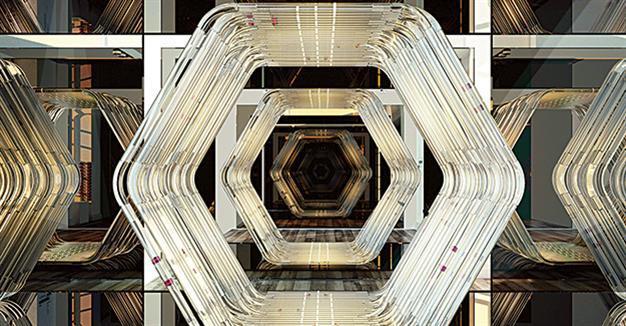Turkey’s ‘Wish Machine’ goes to London Design Biennial
ISTANBUL
 Set to take place from Sept. 7 to 27, the inaugural London Design Biennale will feature projects from over 30 countries, which were called to respond to the theme of “Utopia by Design,” celebrating the 500th anniversary of the publication of Sir Thomas More’s classic, “Utopia” (1516).
Set to take place from Sept. 7 to 27, the inaugural London Design Biennale will feature projects from over 30 countries, which were called to respond to the theme of “Utopia by Design,” celebrating the 500th anniversary of the publication of Sir Thomas More’s classic, “Utopia” (1516). Coordinated by the Istanbul Foundation for Culture and Arts (İKSV), Turkey’s contribution to the biennale presents “The Wish Machine,” a project undertaken by Istanbul-based multidisciplinary design studio Autoban.
The project was announced at a press conference on June 28 in Istanbul with the attendance of İKSV Chairman Bülent Eczacıbaşı, Autoban founders Seyhan Özdemir and Sefer Çağlar, curatorial advisor, artist and communication advisor Paul McMillen, architect Zehra Uçar, Koleksiyon furniture designer and brand director Koray Malhan and Istanbul Design Biennial Director Deniz Ova.
The “The Wish Machine” installation takes direct inspiration from the “wishing tree,” a cultural tradition deeply rooted in ancient Anatolian faith and found in ancient Greek, Kabala and Persian beliefs. Its origins can be traced back to the Neolithic period. It operates on a simple mechanism that involves affixing a note or a memento to a branch of a tree as an act of hope born out of hopelessness.
With this act, the tree becomes a place for one’s hopes and wishes, which are pinned on universal powers, in the hope that they can change their fate. “The Wish Machine” takes this multicultural tradition as the key insight into how design and utopia can cooperate.
In forming “The Wish Machine,” Özdemir and Çağlar were motivated by the utopian idea of detaching from all known parameters belonging to the past and the present to dream for a better future.
This positively provocative approach to suggest solutions for humanity and the act of dreaming was their biggest inspiration, reflected in their own field of design. The biggest problem they identified in today’s world was the inability to express an idea or a dream about a more positive future, without constantly having to struggle with the chaos of the present.
Having realized that preceding systems that were designed to create a “perfect” order from chaos and diversity have eventually failed, the designers embraced the endless journey both as a method and form.
















